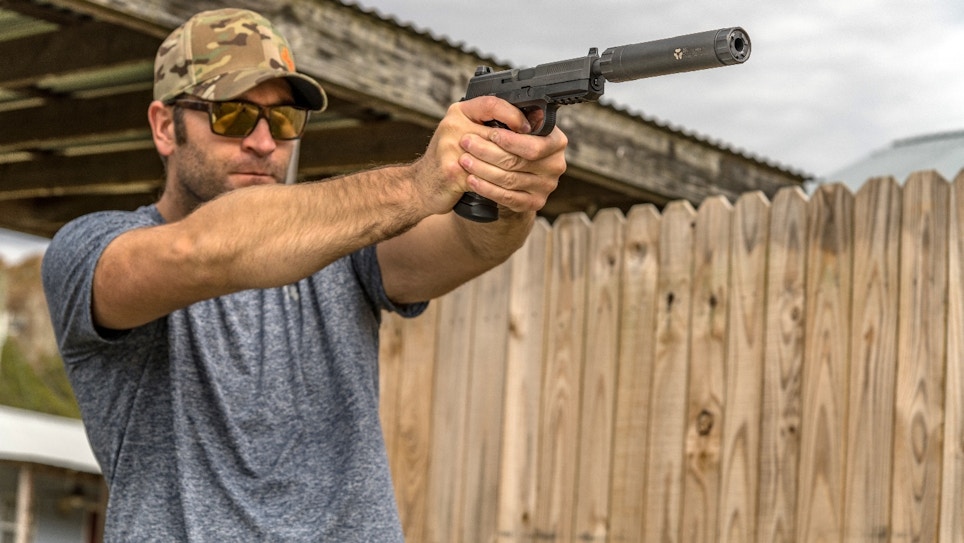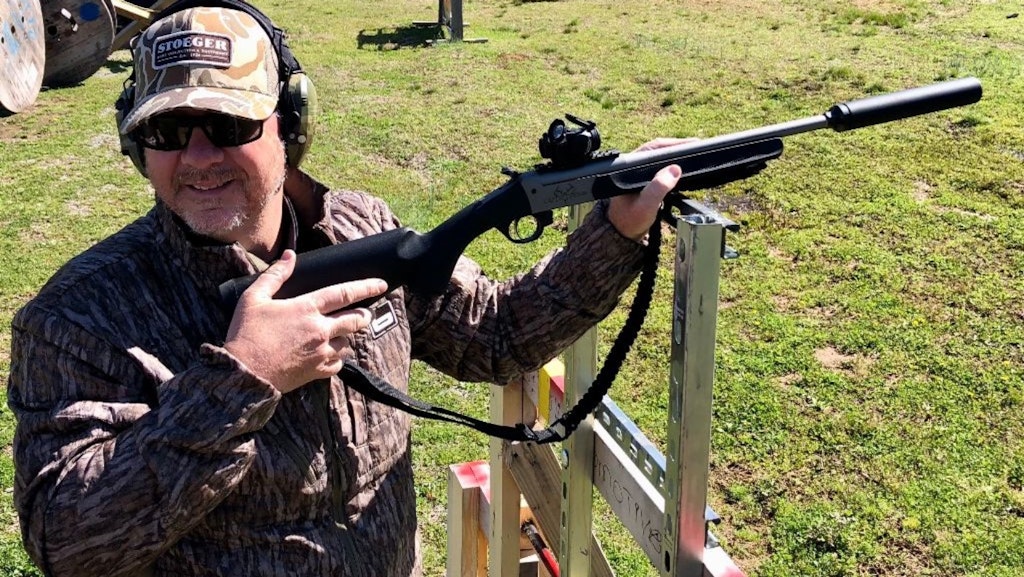Plainly put, people across the country wanting or waiting on a suppressor are asking the same question: What the heck is going on with suppressor license times and the supposed “new digital system” that was supposed to make things faster? They’re asking staffers in stores and online via email and messages. They’re asking in chat rooms, on the suppressor company websites, at ranges and hunting lodges, and around the bar or table with friends. The question is not new, either, although previously it focused on the paper-mail-wait system instead of today’s technology.
The answer is, no one knows, because the delays could be multiple reasons. Mistakes made on the form. Understaffed government departments. Foot-dragging because “politics!” A surge in requests. Holidays. An increase in interest of ownership. Preparation for hunting seasons, as dozens of states now allow the use of suppressors. If not for the Hollywood-generated mythology, ignorance, stigma and political winds, the approval and use of suppressors might even be more widespread than it is now.
As of mid-December, according to the federal Bureau of Alcohol, Tobacco, Firearms and Explosives, the wait time for a Form 4 Trust was about 230 to 240 days for paper and 225 days for the e-form. For a Form 4 Individual, it was about 215 days for paper and 175 days for the e-form. Both easily were the longest of any of the 14 required firearms forms on the bureau’s site (atf.gov). Even just going with the e-form time lapse, they still were the longest. Wait times for a Federal Firearms License to sell or transfer firearms was just two months, and that’s with the paper form. The agency doesn’t have an electronic form for the FFL application.
Just 60 days to get a license to sell or transfer, but up to 225 days for the supposedly easier and faster digital application for a suppressor? It doesn’t make sense. And that’s why, of course, consumers, retailers and even some politicians are raising Cain about it. Unfortunately, little can be done other than to wait, prod state and Congressional leaders to apply pressure, and hope for the best.
“The times are coming down some,” said Joshua Hood, Senior Consumer Service Rep with Advanced Armament Corporation. “It used to be, for me personally, probably 13 to 14 months. Now it’s about eight or nine months. But then you’ll catch a random (filing) where a guy has an approved form in 30 to 45 days. Or you’ll maybe buy 10 cans in four months but they’ll approve just one. It’s still all over the place, and that can be frustrating. It definitely is not 90 days like they said at the start of all this.”
That was the supposed hook to the Form 4 electronic form, the big attraction. The digital world would drastically speed up the entire process. Gone would be the paper forms, submission, examination, lost in the shuffle, put in a pile or whatever else might happen. The e-form would be, comparatively speaking, easier to receive, manage, examine and accept or deny. In theory, that all sounds great. Theory and reality — especially with the federal government — rarely, if ever, work hand-in-hand, though. The process still is long, and frustrating, for everyone involved.
“One of the only consistent things about the ATF is the inconsistency,” Hood said.
What’s the Process?
The “eForm4” was relaunched by the ATF in January 2022 in an effort to streamline the process. The belief is that electronic forms are approved quicker than paper forms with less chance of problems. Electronic forms for firearms purchases or transfers have, at least in my experience, been about the same time or slightly faster than a paper submission.
Anyone interested in buying a suppressor must fill out the form and submit fingerprints on the bureau’s FD-258 fingerprint card for a background check. A check for $200 also must be submitted for the tax stamp. All this is part of the process to own a National Firearms Act (NFA)- regulated item. Retailers who don’t do fingerprinting, or don’t use an Electronic Fingerprint Transmission service, can direct customers to local law enforcement or someone else who does them.
A form that is incorrectly or not completely filled out will be rejected. A form that does not come with fingerprints will be rejected. Don’t forget the check, either. No money, no consideration. After a consumer buys the suppressor, pays for the tax stamp, fills out and submits the form, the waiting game begins. That’s where you, the retailer, likely may get asked how long. And you apologetically shrug, say you’re not sure and admit it could be anywhere from a few weeks to six or eight months.
You or the buyer can check the status by calling the NFA Branch at (304) 616-4500 to inquire. You’ll need the name of the owner or trust, serial number on the suppressor, and name of the transferor. All names will need to be as they are on the forms or confirmations. An ATF rep can check on the status. This is one service you can provide to customers that goes a long way to offering some goodwill for the long wait.
Hood said he’s doubtful for quick approvals anytime soon, but is hopeful. Until then, it’s hurry up and wait.
“If you put in for 10 cans in 10 months, in theory right now, you’ll probably get the first one you applied for by the time you put in the 10th one,” he said. “I tell people to start with a .22 rifle suppressor and maybe a .45 or bigger calibers, and then go into the other calibers. I know they have said they want to hire more agents to review and approve applications, but it’s the government. And they use contractors sometimes, too. I’m sure the digital form has helped some. But I also don’t think we’ll ever get it to where it’s just an over-the-counter purchase and approval, like for a firearm, although that would be great.”
How to Help Customers
Tom Petty said the waiting is the hardest part, but he probably never (or rarely) waited eight months for something he wanted. A custom guitar, perhaps. But his words ring true. Waiting, especially after paying, certainly can be difficult and frustrating.
“It’s hard to tell someone to give me $1,000 but you have to wait up to a year to get the product,” Hood said. “I think if you get approval in three to five months, then you’d probably have a little more acceptance with sales, or at least it would be a little more palatable. Six or eight months, or more, is a long time.”
Suppressors are legal to own and use in 42 states, and 39 allow them for hunting. Shooters have found that changes in point of impact are minimal, and after dialing in the correct ammunition, hunts and range sessions are more enjoyable. Hood said sales ebb and flow with seasons and other events, including in the political world. “Sales have tailed off some. I have talked with multiple people I’m friends with in the industry, and summer was crazy slow,” he said. “Inflation, uncertainty … it’s the things you don’t know sometimes. When the Israel thing started, we saw a little pickup in sales, but it’s been slower than most years. Distributors aren’t buying as much and dealers are not buying as much, mostly due to the uncertainty.”
One thing that’s certain is 26 Republican senators in Congress are still in support of S.401, the Hearing Protection Act. It was refiled in February 2023 by Sens. Jim Risch and Mike Crapo (both R-Idaho) after failing to gain approval in 2022. The bill would remove suppressors from the NFA. Applying for one would fall under the National Instant Criminal Background Check just like a firearm. The bill also would put more money into state wildlife conservation departments by taxing suppressors under the Pittman-Robertson Act.
Another bill was introduced in Congress in November 2023, the Tax Stamp Revenue Transfer for Wildlife and Recreation Act. It would expedite the process to obtain a suppressor to no longer than 90 days. Revenue would be redirected to the Pittman-Robertson fund for conservation efforts.
The best thing to do for customers is simply explain the entire process. The more customers know about the wait times, the better. Offer to call to find out the status after a few months. When customers call, offer as much information as you can. It’s a long process — hopefully, one day, it will be shorter — but it pays off when it ends and customers are happy.
Sidebar: Three Suppressors to Consider
Buck 30
Silencer Central has partnered with Buck Commander on the Buck 30 by Banish, the latest addition to its line of silencers. The Buck 30 is designed for hunting deer and other big game. The 30-caliber suppressor is laser welded for precision and durability, has an industry-standard hub, and works with rifle calibers up to .300 Win. Mag. The 6.9-inch stainless-steel design delivers impressive sound reduction, suppressing a 6.5 Creedmoor with a 20-inch barrel to 132 decibels. Its tubeless construction allows for a weight of only 13.8 ounces and a diameter of 1.54 inches. MSRP: $699. Info: www.silencercentral.com
Gemtech Abyss 7.62
Gemtech expands its Abyss series with the Abyss 7.62 suppressor, constructed of stainless steel and titanium components. It is 6.6 inches long without a mount and 7.3 inches when paired with Gemtech’s ETM (Elite Taper Mount). The Abyss series suppressors can be mounted to barrels through direct thread standards. Additionally, the Abyss 7.62 is fully-auto rated, and has a caliber rating ranging from 5.7x28 mm through .300 .Win Mag. MSRP $945 Info: www.gemtech.com
Surefire SOCOM556-RC3
The new Surefire SOCOM 556-RC3 is designed to have 60% less back pressure, reducing toxic gases toward the shooter and offering better control. The design also assists with a cleaner firearm. The RC3’s Inconel construction offers better durability and, according to Surefire, virtually eliminates explosive flash. The suppressor reduces sound, flash and dust signature, all helping provide a better shooting experience at the range or in the field. The designs. Surefire says the RC3 is “the result of exclusive parametric modeling and multi-variable aerospace software research on advanced supercomputers.” MSRP $1,799 Info: www.surefire.com







